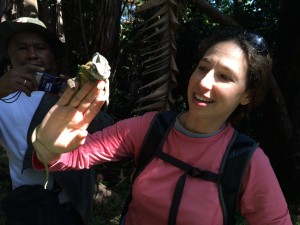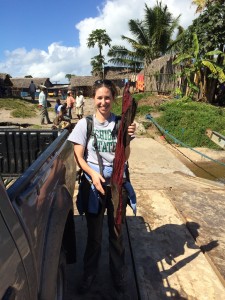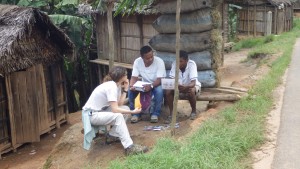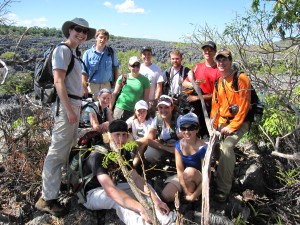
When did you first get interested in working with in Madagascar and what motivated you to undertake this work?

I have been teaching and conducting research in Madagascar since 2008. I was originally offered the chance to take over the Madagascar study abroad program for Michigan State University (MSU) when I first arrived at the university and jumped at the chance. Also, in graduate school at Cornell, I had three very good friends who did Peace Corps in Madagascar and one married a Malagasy man. So, I had a lot of exposure to the amazing people and biodiversity in Madagascar in graduate school and when I was presented with the opportunity to teach and conduct research there, I jumped at the chance!!
What projects are you currently working on that relate to lemur or environmental conservation?
I am interested in understanding the human dimensions of lemur conservation. My current research projects involve participatory risk mapping of poaching risks. So, essentially I collect data on how different groups of local people think lemur poaching risks are distributed across the landscape. And, with that information, I examine which conservation investments would be best at reducing the negative aspects of poaching to lemurs and people. This work is occurring around Manompana (northeast Madagascar) and Analamazaotra (eastern Madagascar).

What is a typical day like for you? What is your day like when you’re working in the field?
In Michigan, my typical day involves teaching in the classroom, answering emails, interacting with students and other faculty, and spending time on my computer (doing data analysis, writing grant proposals or papers). Not very exciting!
In the field, my typical day involves traveling to different communities to conduct face-to face interviews with local people, holding workshops at NGO offices or having meetings in Tana (the capital city). Sometimes I get to do guest lectures at a local university and meet with Malagasy faculty. I do my best to visit protected areas and see firsthand the conservation programs and people that are part of my projects. So, spending as much time in the field while in Madagascar is important. I spend as little time at my computer as possible!

What are the hardest parts about working in Madagascar?
Being away from my family. I have a 3.5 year old daughter who is very keen to travel to Madagascar with me, but we haven’t been able to work out the logistics yet.
What are the biggest threats facing lemurs – or the environment more generally – in your line of work, and what needs to be done to alleviate those threats?
I am interested in extra-legal hunting. I see a huge program with poaching—not only lemurs but also tortoises and trees. It is really important, I think, to look at the crimes themselves and not the criminals. Illegal rosewood trade threatens the forests that lemurs live in too. Conservation crime is booming all around the world and it threatens sustainable development investments.
I also see corruption as being a huge issue for conservation generally and lemur conservation specifically. My work in Madagascar has helped open my eyes to traditional ways of defining and reforming corruption. It is really important to consider the local/social context within which corruption occurs. I’m interested in understanding Madagascar-related perceptions of corruption and corruption reform. Using models from the US or Europe may help the conservation community get close to the goal, but without understanding and incorporating the Malagasy context, we’ll never get to our final destination.
 In ten years, what do you hope to have accomplished in terms of your work in lemur conservation and Madagascar?
In ten years, what do you hope to have accomplished in terms of your work in lemur conservation and Madagascar?
In ten years, I hope I can look back and see reduced conservation crime rates in Madagascar. I also hope to see reduced negative effects of conservation crime on local people and biodiversity. This would mean increased return on sustainable development investments.
Take Action
- Meredith recommends supporting GERP (Groupe d’Etude et de Recherche sur les Primates de Madagascar) and Alliance Voahary Gasy (AVG), who do great work in Madagascar.
- Visit Meredith’s website: www.conservationcriminology.com

 In ten years, what do you hope to have accomplished in terms of your work in lemur conservation and Madagascar?
In ten years, what do you hope to have accomplished in terms of your work in lemur conservation and Madagascar?